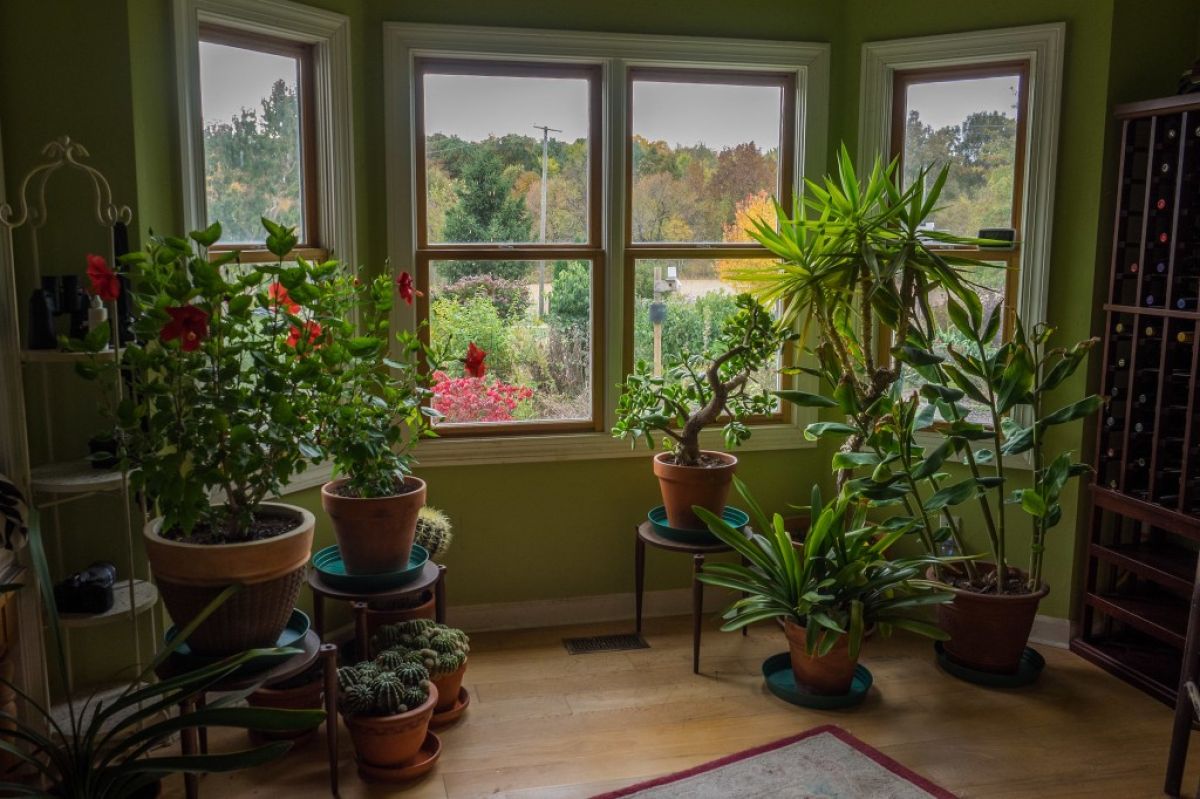Plants add vitality to our indoor living spaces, and before the first frost, gardeners should hose off the plants that have summered outdoors to rid them of insects before taking them indoors.
Cut back those that are too big, for example, palms, hibiscus, begonias, and ivy. If there is not enough natural light in a room, try setting a reading lamp about three feet or less from the plant to help it manufacture a little extra food each evening. Plants vary in terms of their light requirements and some, like ferns, can manage with minimal light as long as they have humidity.
Plants that hail originally from jungles and rain forests need humidity and the least amount of light.
Most flowering plants need full sun and grow best in a window with a southern or south-eastern exposure. A few flowering plants, however, such as African Violets prefer limited sun and a window with an eastern exposure. All potted plants should be rotated regularly to ensure that all parts of the plant receive an equal amount of light.
Most houseplants thrive in daytime temperatures ranging from 62F-70F degrees with cooler night temperatures. Those, like geraniums, that prefer cooler temperatures do best on windowsills or cool porches.
Humidity can be increased by standing pots in a tray with pebbles and water.
This is Moya Andrews, and today we focused on houseplants.










